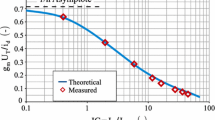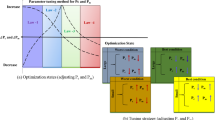Abstract
Nowadays, wireless communications at frequencies of gigahertz have an increasing demand due to the ever-increasing number of electronic devices that uses this type of communication. However, the design of Radio Frequency (RF) circuits is difficult, time-consuming and based on designer knowledge and experience. This work proposes an interactive evolutionary approach based on genetic algorithm, implemented in the in-house iMTGSPICE optimization tool, to perform the optimization process of a Low-Power Low Noise Amplifier (LNA) dedicated to Wireless Sensor Networks (WSN), which is robust through the corner and Monte Carlo analyses and implemented in two Bulk CMOS technology nodes: 130 nm and 65 nm. Regarding each technology node, we performed two experimental studies to optimize the LNA. The first one used the conventional non-interactive approach of iMTGSPICE, which was not assisted by a designer during the optimization process. The second one used the interactive approach of iMTGSPICE, which was monitored and assisted by a beginner designer during the optimization process. The obtained results demonstrated that the interactive approach of iMTGSPICE performed the optimization process of the robust LNA from 16 to 94% faster than the non-interactive evolutionary approach. The design regarding the technology node of 130 nm took 341 min for the non-interactive and 20 min for the interactive optimization process, whereas the design in the 65 nm took 537 min for the non-interactive and 454 min for the interactive approach.






Similar content being viewed by others
References
Póvoa, R., Bastos, I., Lourenço, N., & Horta, N. (2016). Automatic synthesis of RF front-end blocks using multi-objective evolutionary techniques. Integration, the VLSI Journal, 52(1), 243–252.
Sabry, M. N., Omran, H., & Dessouky, M. (2018). Systematic design and optimization of operational transconductance amplifier using gm/ID design methodology. Microelectronics Journal, 75(5), 87–96.
Silveira, F., Flandre, D., & Jespers, P. G. A. (1996). A gm/ID based methodology for the design of CMOS Analog circuits and Its application to the synthesis of a silicon-on-insulator micropower OTA. IEEE Journal of Solid-State Circuits, 31(9), 1314–1319.
Martins, R., et al. (2019). Two-step RF IC block synthesis with pre-optimized inductors and full layout generation in-the-loop. IEEE Transaction on Computer-Aided Design Integrated Circuits and Systems, 38(6), 989–1002.
Liu, B., Deferm, N., Zhao, D., Reynaert, P., & Gielen, G. G. E. (2012). An efficient high-frequency linear RF amplifier synthesis method based on evolutionary computation and machine learning techniques. IEEE Transaction on Computer-Aided Design Integrated Circuits Systems, 31(7), 981–993.
Póvoa, R., Lourenço, N., Martins, R., Canelas, A., Horta, N., & Goes, J. (2020). A folded voltage-combiners biased amplifier for low voltage and high energy-efficiency applications. IEEE Transactions on Circuits and Systems II: Express Briefs, 67(2), 230–234.
Canelas, A., Póvoa, R., Martins, R., Lourenço, N., Guilherme, J., Carvalho, J. P., & Horta, N. (2020). FUZYE: A Fuzzy C-means Analog IC Yield optimization using evolutionary-based algorithms. IEEE Transactions on Computer-Aided Design of Integrated Circuits and Systems, 39(1), 1–13.
Lourenço, N., & Horta, N. (2012). GENOM-POF: Multi-objective evolutionary synthesis of analog ICs with corners validation. Philadelphia, USA: In Genetic and Evolutionary Computation Conf.
Bush, B. J., & Sayama, H. (2011). Hyperinteractive evolutionary computation. IEEE Transaction Evolutionary Computation, 15(3), 424–433.
Yamaguchi, G., Fukumoto, M. (2019). A music recommendation system based on melody creation by interactive GA. In 20th IEEE/ACIS International Conference on Software Engineering, Artificial Intelligence, Networking and Parallel/Distributed Computing (SNPD).
Brintrup, A. M., Ramsden, J., Takagi, H., & Tiwari, A. (2008). Ergonomic chair design by fusing qualitative and quantitative criteria using interactive genetic algorithms. IEEE Transaction Evolutionary Computation, 12(3), 343–354.
Parmee, I. C. (2002). Improving problem definition through interactive evolutionary computation. Artificial Intelligence for Engineering Design, Analysis, and Manufacturing, 16(3), 185–202.
Moreto, R. A. L., Thomaz, C. E., & Gimenez, S. P. (2019a). Impact of designer knowledge in the interactive evolutionary optimisation of analogue CMOS ICs by using iMTGSPICE. Electronics Letters, 55(1), 16–18.
Moreto, R. A. L., Thomaz, C. E., Gimenez, S. P. (2018). Automatic optimization of robust analog CMOS ICs: An interactive genetic algorithm driven by human knowledge. In proc. of the SBCCI 2018, Bento Gonçalves, Rio Grande do Sul, Brazil.
Moreto, R. A. L., Rocha, D., Thomaz, C. E., Mariano, A., Gimenez, S. P. (2019). Interactive Evolutionary Approach to Reduce the Optimization Cycle Time of a Low Noise Amplifier. In proc. of the SBCCI 2019, São Paulo, São Paulo, Brazil.
Souza, M. De, Mariano, A., & Taris, Thierry (2017). Reconfigurable Inductorless Wideband CMOS LNA for Wireless Communications. IEEE Trans. Comput.-Aided Design Integr. Circuits Syst., 64 (3), 675–685.
Taris, T., Mabrouki, A., Kraimia, H., Deval, Y., & Begueret, J. -B. (2010). Reconfigurable Ultra low power LNA for 2.4GHz wireless sensor networks. In proc. of the IEEE Int. Conf. on Electronics, Circuits and Systems, Athens, Greece.
Spice Opus (c) version 2.32. Revision: 216. Circuit Simulator. Oct. 17 (2017). University of ljubljana slovenia. Faculty of electrical engineering. Group for Computer Aided Design. Retrieved March 4 2020 http://www.spiceopus.si/.
Moreto, R. A. L., Thomaz, C. E., & Gimenez, S. P. (2019b). A customized genetic algorithm with in-loop robustness analyses to boost the optimization process of analog CMOS ICs. Microelectronics Journal, 92(10), 1–12.
Moreto, R. A. L., Thomaz, C. E., & Gimenez, S. P. (2017). Gaussian fitness functions for optimizing analog CMOS integrated circuits. Transaction Computation-Aided Design Integration Circuits System, 36(10), 1620–1632.
Moreto, R. A. L., Gimenez, S. P., Thomaz, C. E. (2013). Analysis of a new evolutionary system elitism for improving the optimization of a CMOS OTA. In Proc. of the 1st BRICS Countries Congress (BRICS-CCI), CI Applications in Industry Symposium, Recife, Pernambuco, Brazil.
MOSIS Educational Program (MEP). Retrieved March 10 2020 http://www.mosis.com/.
Taiwan Semiconductor Manufacturing Company (TSMC). Retrieved March 10 2020 https://www.tsmc.com/.
Tuma, Tadej, & Bűrmen, Árpád. (2009). Circuit simulation with SPICE OPUS theory and practice. Birkhäuser Boston.
Acknowledgments
The authors would like to thank the São Paulo Research Foundation (FAPESP) – Grant #2018/21341-4, Coordenação de Aperfeiçoamento de Pessoal de Nível Superior – Brasil (CAPES) – Finance Code 001 and Conselho Nacional de Desenvolvimento Científico e Tecnológico (CNPq) – Grant #307804/2019-4 for their financial supports.
Author information
Authors and Affiliations
Corresponding author
Additional information
Publisher's Note
Springer Nature remains neutral with regard to jurisdictional claims in published maps and institutional affiliations.
Rights and permissions
About this article
Cite this article
de Lima Moreto, R.A., Mariano, A., Thomaz, C.E. et al. Optimization of a low noise amplifier with two technology nodes using an interactive evolutionary approach. Analog Integr Circ Sig Process 106, 307–319 (2021). https://doi.org/10.1007/s10470-020-01755-1
Received:
Revised:
Accepted:
Published:
Issue Date:
DOI: https://doi.org/10.1007/s10470-020-01755-1




